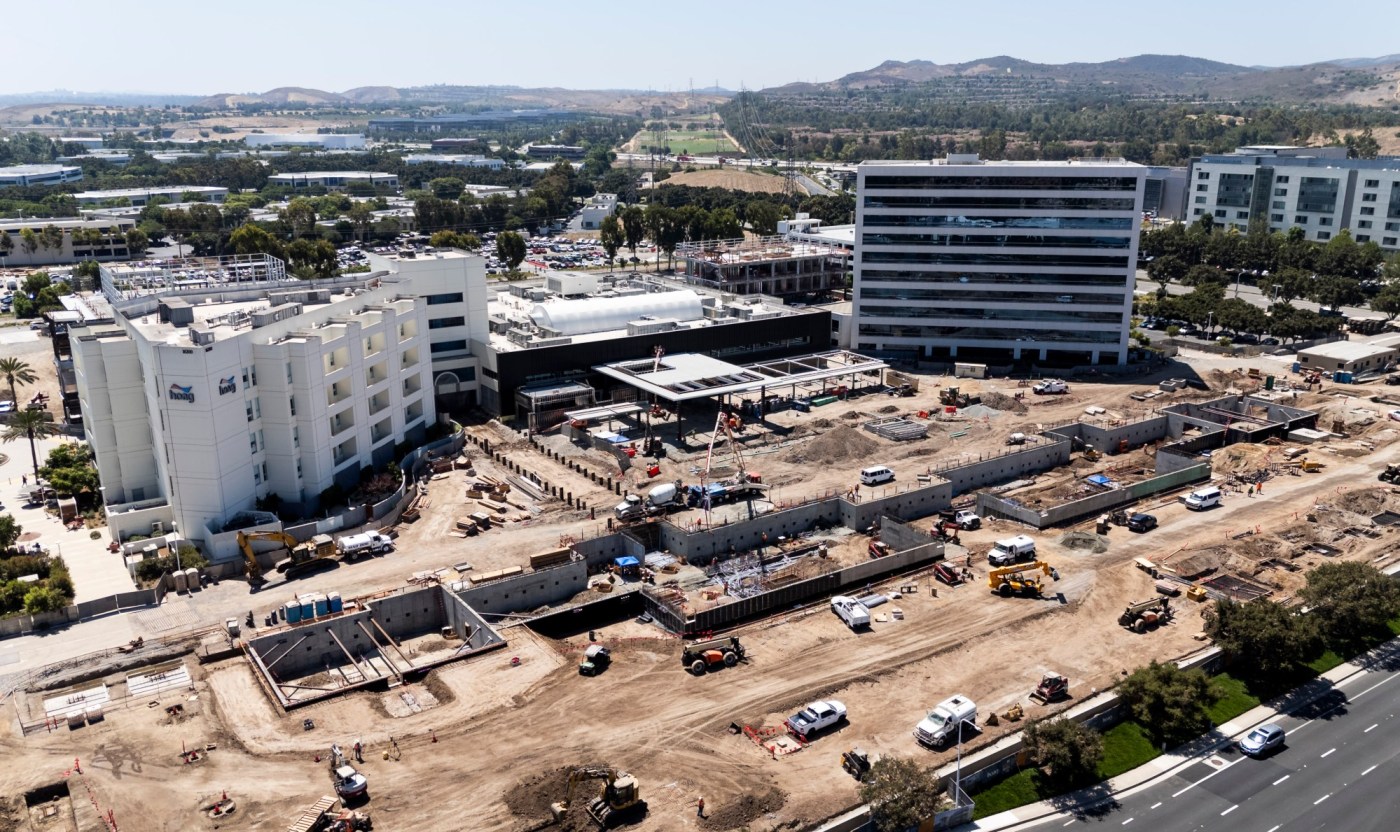Kenneth Chang discovered he had a knack for inventing while doing medical missionary work in a rural Taiwanese fishing village.
Short of all sorts of supplies, he recalls using fishnets for sutures, fishhooks for needles and, generally, rigging up a whole menagerie of equipment with whatever his team had on hand.
When he returned to Brown University to finish medical school, his Ivy League colleagues thought he was mad, he said. “I was willing to experiment with materials that most of my peers wouldn’t touch.”
Some 40 years later, Chang’s patents are used in medical offices around the world to treat patients for gastrointestinal health and improve pre-cancer diagnosis and therapy.
After a distinguished career at UC Irvine where he launched the university’s comprehensive digestive disease center and was chief of the medical school’s division of gastroenterology, Chang accepted a new challenge this summer at Hoag.
His vision, backed by a substantial investment from the healthcare provider, is to launch Orange County’s largest digestive health institute in the the next two years, transform the community hospital into a research leader and — eventually — eradicate Orange County of esophageal and colon cancer.
Within the next two years, thanks to a recent $1 billion investment, Hoag will greatly expand its Irvine medical center with six new buildings, including new centers for women’s health and surgical innovation and Chang’s institute for digestive health and cancer treatment.
Looking at the construction underway, Chang and Hoag President and CEO Robert Braithwaite said the revitalization of the medical center will push the community healthcare system to become more like a research institute that also provides top-notch care.
Dr. Kenneth Chang, executive medical director of the Digestive Health Institute, left, and Robert T. Braithwaite, president and CEO of Hoag Hospital, stand at a model showing the expansion at Hoag Hospital in Irvine, CA on Wednesday, July 31, 2024. (Photo by Paul Bersebach, Orange County Register/SCNG)
Braithwaite said he aims to shape Hoag in the model of the Mayo Clinic — not itself a university, but still a renowned medical leader in training fellows and conducting cutting-edge research.
Following this round of construction, for example, Braithwaite plans to construct another Irvine campus building where corporate biotech innovators will work hand-in-hand with Hoag doctors to put new technology on the fast track from the research bench to the operating room, he said.
Hoag’s determination to grow in Irvine spurred from community need, Braithwaite said. Around 2017, Hoag’s Irvine hospital was frequently reaching 100% capacity. It was a clear sign they needed to expand.
But Hoag wanted to “grow different,” he said, beckoning a phrase that harnesses the community hospital’s Apple-sized ambitions.
Hoag hired 10 architectural firms to come up with designs for a remodeled Irvine medical campus, which originally opened as a traditional hospital tower under another operator in the 1980s and changed hands a couple of times before Hoag moved in about 15 years ago.
“I told the architects we want you to use your best thinking and best research in healthcare to bring us a new design,” Braithwaite said.
Two of the firms came up with what Hoag’s calling an “institute model.”
Gone are the days of cardiology on floor 4, pulmonary on floor 5, GI on floor 6, and so on, Braithwaite said.
The new model is about synergy, not separation.
“We want to create a flow of clinicians and experts in one area,” he said. “This is not a general approach, but it’s about giving people what they want and deserve: expertise and quality.”
His idea is that the physical design of the buildings will, like a university, encourage innovation between physicians, endoscopists and others as they pass each other in the halls.
That’s where Chang comes in. With his 30 years of experience at UCI, Braithwaite believes Chang is the leader who can shepherd Hoag into a new era of cancer research and care.
One way Chang says he plans to tackle cancer is by putting Hoag at the forefront of using novel, less invasive technologies. Soon, someone with inflammatory bowel disease, for example, might be screened with an endoscopic ultrasound instead of a colonoscopy, he said.
“Our goal is to treat life-altering conditions with less and less invasive techniques,” Chang said. “We’re miniaturizing the whole approach to cancer.”
The traditional approach to treating cancer, especially at the dawn of oncology in the 20th century, was notoriously invasive — think rounds and rounds of chemotherapy and life-threatening organ removals.
Chang wants to “miniaturize” everything about the cancer paradigm — the consequences, the risks, the procedures, the incidence.
“When we talk about cancer, where do things go awry? It’s at the cell level,” he said. The smallest common denominator of life. “Right now, when it comes to treatment, we wait for a cell to multiply a gazillion times and then it becomes a cancer,” he said. “If you have bad plumbing, you don’t wait for your house to flood. You fix the leak.”
But, he and Braithwaite say Hoag’s vision is not just about innovation. It’s about people.
“One of my guiding statements in my career is innovation fueled by compassion,” Chang said.
“There’s innovation fueled by money, prestige and power,” he added. “None of that is sustainable for me. But when you have innovation for a patient in critical condition in front of you, you’ll not accept ‘no’ for an answer. You’ll search your heart and soul for a solution.”
He reflects back on his missionary work 40 years ago. “If we didn’t have what we needed,” he said, “we would make it.”
Related Articles
County upped demands for Viet America Society payback to about $4.2M, threatened litigation
Anaheim students say so long to summer, hello to learning
Navy to hold public meeting on cleaning up old skeet range at Seal Beach base
Laguna Beach Art-A-Fair offers a feast for the eyes
Former Queen Mary operators face securities fraud charges





